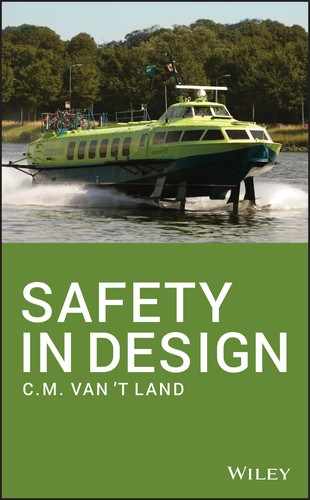Preface
This book emanates from the production of organic peroxides. The Dutch multinational Akzo Nobel, for which I worked as a chemical engineer between 1968 and 2000, manufactures these compounds.
In 1969, a Dutch company named Noury & Van der Lande became part of Akzo Nobel. That company had discovered around 1920 that dibenzoyl peroxide, a solid particulate material, can remove the yellowish color of flour. The finding was patented worldwide, licenses were given, and the industrial production of dibenzoyl peroxide was started. The production of synthetic plastics has increased since the 1940s, resulting in the increasing importance of organic peroxides as initiators of the radical polymerization of vinyl monomers. Noury & Van der Lande also started the production of organic peroxides for this application.
The expression “peroxides” is short for “superoxides.” It indicates that the compound contains relatively much oxygen. All or part of this oxygen is “active oxygen”. The active oxygen causes the desired action at the application of the organic peroxides. For example, the bleaching of flour is caused by the liberation of “active oxygen,” oxidizing carotene to colorless compounds. A further example, at the manufacture of polymers, is the decomposition of organic peroxides at relatively low temperatures to form free radicals. The free radicals act as initiators for polymerization reactions.
Explosions and fires at the manufacture and the handling of these compounds have happened in the past. Peroxides are characterized by the presence of the peroxo group –O–O–. In organic peroxides, this group is bound to at least one carbon atom, or is bound to a carbon atom via a different atom. The presence of the peroxo group causes the thermal instability of organic peroxides. It also, in many instances, causes the sensitivity to impact, friction, and other chemicals. For example, dry dibenzoyl peroxide is very sensitive to impact, and serious accidents caused by this sensitivity have happened with this material in the past.
In retrospect, the most serious accidents within Noury & Van der Lande and Akzo Nobel occurred between 1935 and 1975. In this period, the production increased from tens to hundreds of metric tpa per product. The majority of serious accidents occurred during the reactions to produce organic peroxides.
My former colleague, the late Hans Gerritsen, proposed a method to improve the protection of the manufacture and handling of organic peroxides significantly. The method is called intrinsic continuous process safeguarding. The safeguarding is based on chemical and physical properties of reaction systems, and an activation of protection systems is not required. The method is also applicable to other chemical production systems. It is discussed in Chapter 1.
Hans Gerritsen also, at Deventer in The Netherlands in 1985, drew my attention to the fact that the methodology can be applied to all types of human activity, and that is what this book is about.
